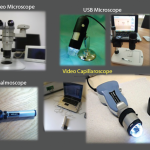They found that several parameters in capillaroscopy exam were significantly more prevalent in SLE than in healthy controls. They included tortuous capillaries, abnormal morphology, hemorrhages and higher nailfold score, said presenting author Karin Melsens, a PhD student and an academic assistant trainee in rheumatology at Ghent University. She worked with Vanessa Smith, MD, PhD, professor of rheumatology at Ghent University.
In six studies, they also found that disease activity correlated with nailfold capillaroscopy score. In one study, abnormal morphology—defined as meandering shapes—was associated with disease activity. Frequent attacks of Raynaud’s phenomenon and gangrene were significantly correlated with dilated capillaries in one study each, researchers found.
“The first systematic review on capillaroscopy in SLE attests conclusive, significant differences in morphology, hemorrhages, semi-quantitative assessment and qualitative assessment compared with healthy controls,” researchers wrote. “Additionally, results demonstrate … an association of capillaroscopic changes with disease activity in SLE.”
Larger-scale research is now underway with the EULAR study group on microcirculation in rheumatic diseases, they said.
Location, Location, Location
Another study, from researchers in Greece, found that people living in urban areas of Crete were twice as likely to be diagnosed with SLE than people living in rural areas.3
“We found that the disease is twice as common in patients who have lived exclusively in urban areas,” said George Bertsias, MD, associate professor of rheumatology at the University of Crete, who presented the findings. “It starts earlier, and there are more male patients [with SLE] in the cities compared with the villages.”
Not many studies have looked at possible links between SLE and where people live, even though it’s known that the disease involves a complicated interaction between genetic, epigenetic and environmental factors, Dr. Bertsias said.
Crete is considered to have a genetically stable population and is homogeneous in terms of ethnicity and sociodemographic traits, and without significant inequalities in access to healthcare facilities. About 60% of the people on the island live in rural areas, and 40% in urban areas.
Researchers examined data from the Lupus Epidemiology and Surveillance registry in Crete, which includes patients from community centers to tertiary centers. They found that SLE prevalence was significantly higher in urban areas, at 165 per 100,000 people, than rural parts of the island, at 123 per 100,000 (P<0.001).
Researchers performed a subanalysis on 200 people who lived exclusively in urban areas or exclusively in rural areas and found the relative risk for urban compared with rural was 2.0 (95% confidence interval [CI], 1.5–2.9). Patients in urban regions had a significantly lower age at diagnosis—38 vs. 44 years old (P=0.005). There was also a lower female-to-male ratio in urban areas than in rural areas: 6.5 to 1 compared with 11 to 1 (P<0.05).

